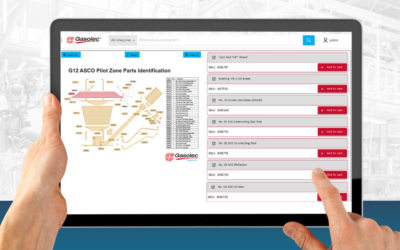A recent McKinsey report targeting manufacturing and industrial companies highlighted how those companies often struggle with deploying next generation applications and tools because support of the requirements by legacy tech backbones is often a challenge.
They’re faced with Go Big (aka – expensive, resource-consuming) Or Go Home technology initiatives such as foundational, monolithic ERP re-platformings. Given that it’s a McKinsey report, it’s targeting the Fortune 500 companies. So, for middle market manufacturers, distributors and other B2B enterprises, the struggle is even greater — both in terms of financial resources and internal technology team bandwidth.
Targeted strategies can deliver big results
McKinsey zeros-in on certain “surgical” strategies that can derive a big bang for the buck (and effort), such as “aftermarket solutions to create new revenue streams” or “consolidating data from different sources” to make it available in real time to business teams, suppliers, partners, dealer networks and customers.
One way is to take both a foundational approach and couple it with a surgical application or tool to support a “surgical” outcome. For example, developing a better digital experience around connected products for customers, sales teams, and dealers. That is, understanding what each constituent (sales team, customer, supplier, etc.) needs and wants from your product information, then packaging and delivering just that to each, in real-time, in a pleasing U/I (like your phone or desktop).
Pulling that data – the product catalogs, the parts schematic, the warranty detail — there’s an inherent challenge with this because it’s everywhere in your enterprise. There’s no single source to access it easily.
Integrations can move data seamlessly
Start with integrations — the foundational piece. McKinsey goes on, “With the right integration layers, critical data elements (for example, engineering data, manufacturing data, and bill of materials) can seamlessly move between the core systems of record…to create a “digital thread…[A]n effective integration architecture prevents manual rework, allows products to be brought to market faster, and supports data-driven decision making.”
McKinsey notes that with the correct integration layers, critical data elements can seamlessly move between the core systems of record. Engineering and manufacturing data can be integrated to create a “digital thread,” allowing products to be brought to market faster and supports data-driven decision making.
Data Transformation In action
For the team at Envalo, the McKinsey report was further proof that our Enterprise Cloud Integration Platform (ECIP) is a unified, intuitive, business-user friendly platform that acts as a bridge across information islands.
It’s possible to connect internal and external disparate systems, applications, and partner platforms to deliver key information. When it’s seamlessly packaged for the right business teams via a single pleasing GUI interface, it becomes easier to leverage data and intelligence.
“Digital parts catalogs need to be on steroids these days. Customers are demanding this of manufacturers as they select product investment choices,” said Mike Moores, CEO of Envalo. “Rich, dynamic content, and critical real-time parts data is essential to diagnose, verify and display parts, how they function, and replacement availability.”
Parts information is dynamic, therefore the data need be. Parts are released, upgraded iteratively, require information to install, have a lifecycle, a price cycle, warranties underpinning them, and eventual obsolescence. A digital imperative for manufacturers, distributors and B2B operators is to support, through IT, that entire cycle for your customers and partners.
If you’re interest in exploring digital transformation, please share a few details and we will be in touch.
Feature Posts
Introducing InteractiveSchematics: Streamline Your Parts Management
Are you still managing parts sales with outdated PDFs, obsolete parts lists, or elusive paper product manuals? It’s time for a transformation. Envalo is proud to introduce InteractiveSchematics, a cutting-edge solution designed to simplify parts management and elevate...
Adding a Direct-to-Consumer Model Does Not Mean Leaving Your Dealers Behind
As a manufacturer, you’re faced with responding to the evolution of your end customer. Technology continues to change the playing field. Before the Internet, manufacturers relied on sales reps, dealers, and distributors to build awareness and get their products into the hands of their customers.
Post-Purchase Engagement for Industrial Manufacturers: Build Loyalty and Increase Sales
Industrial systems are often large capital investments that last years. Upselling or reselling to the same customer year after year isn’t an option. With near-term sales goals on the horizon, your focus is likely on generating new leads and sales.




